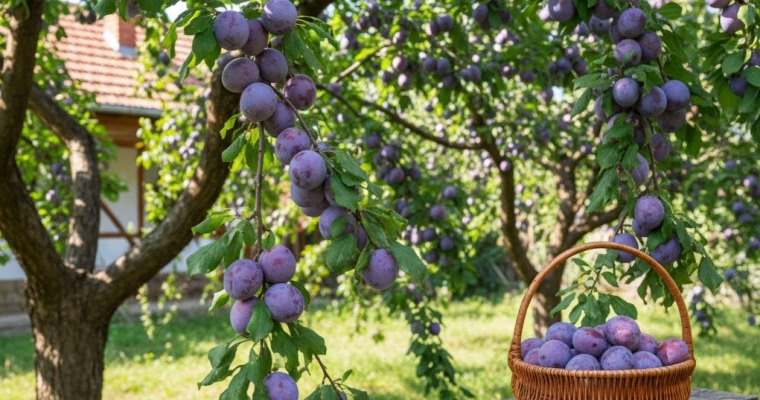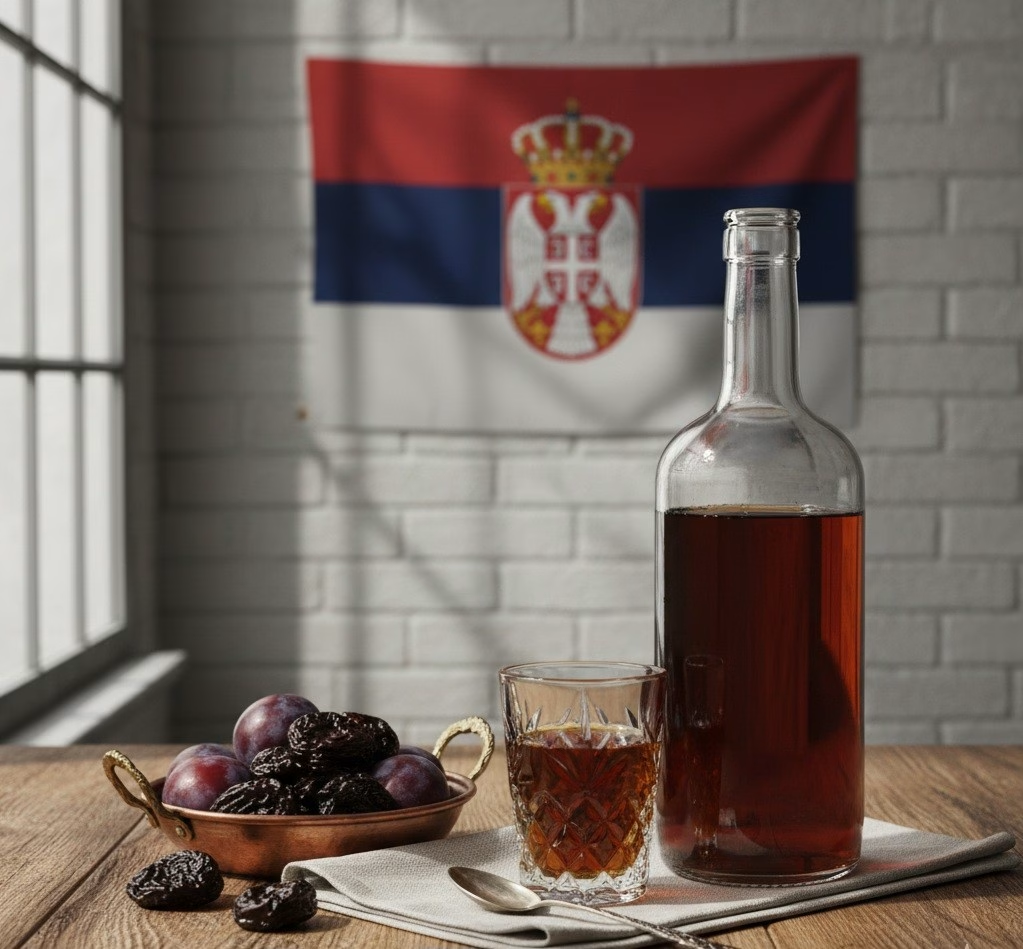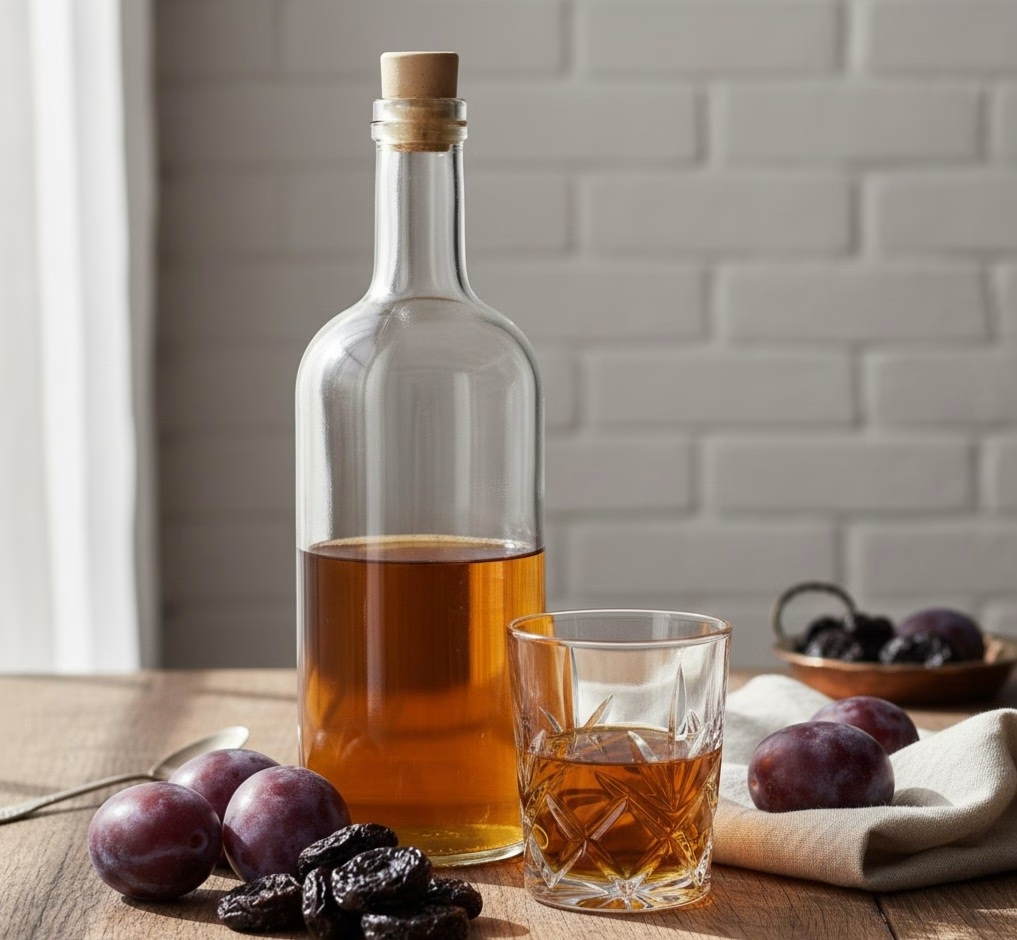The Story of Rakija: Serbia’s Beloved Plum Brandy (Šljivovica)
Rakija is more than just a drink in Serbia – it is culture, tradition, and heritage in a glass. For centuries, this fruit brandy has been at the heart of family gatherings, celebrations, and rituals across the Balkans. As a Serbian and former bartender, I see rakija not only as a national treasure but also as a versatile spirit that can rival the finest whiskies, cognacs, and gins in both character and craftsmanship.

As I come from Serbia and as ex-bartender it’s my obligation to write about plums and rakija. Serbia is small country in southeast Europe where the impacts of west and east can be seen in each step. As one of the worlds biggiest plum producers, rakija, esspecially from plums is something that almost every household is making. From that quanity, there must be a world class quality, isn’t it?
Origins of the Word “Rakija” 🍇🔥
The word rakija is derived from the Turkish word rakı, which itself comes from the Arabic araq, meaning “distilled” or “sweat.” This reflects the centuries-long influence of Ottoman rule in the Balkans, during which distillation techniques spread across the region. However, while the linguistic roots point to the Middle East, rakija as we know it today evolved uniquely in the Balkans, shaped by local fruits, terroir, and traditions.
The History of Rakija in Serbia
The earliest records of rakija in Serbia date back to the Middle Ages, when monasteries were among the first to produce it, primarily for medicinal purposes. Over time, it became a staple drink in every household. Serbs often say, “Rakija is not drunk, it is sipped”, reflecting the respect given to this spirit.

Plum Rakija (Šljivovica): The Heart of Serbian Rakija
The crown jewel of Serbian rakija is šljivovica – plum brandy. Serbia is one of the largest producers of plums in Europe, and much of that harvest goes directly into rakija production. Šljivovica has such cultural and economic significance that it has been granted Protected Designation of Origin (PDO) status as Serbian Slivovica by the European Union.
Classification of Plum Rakija
Šljivovica can be classified by several criteria, most importantly:
- By Strength (Alcohol Content):
- Prepečenica – double-distilled rakija, usually around 45–50% ABV, considered the finest quality.
- Single Distillation – milder versions, usually homemade, around 25–35% ABV.
- By Aging:
- Young (Bela rakija) – clear and unaged, bottled right after distillation.
- Aged (Stara rakija) – matured in oak barrels, developing golden color, smoother taste, and complex aromas.
- By Quality and Tradition:
- Domaca rakija (homemade) – crafted by families, often in small copper stills.
- Industrial rakija – produced commercially, with standardized quality.
Aging in Barrels: How It Works 🪵🥃
One of the key factors that transforms good rakija into exceptional rakija is aging in oak barrels. Freshly distilled šljivovica is crystal clear and sharp in flavor. Once placed in a barrel, a magical transformation begins:
- Color: The rakija gradually turns from clear to shades of amber and gold.
- Aroma: Oak imparts subtle notes of vanilla, caramel, and spices.
- Flavor: Tannins from the wood soften the spirit, balancing the fruity plum base with a smooth finish.
- Complexity: With time, rakija develops layered flavors comparable to well-aged cognac or whisky.
Aging can last from 1 to over 10 years, but there are even 30 years old rakija’s like EMPERUS Reserva Antica , with longer maturation resulting in richer, more refined rakija. Serbian producers often use local oak (hrast), which adds a unique regional character.
Rakija as a Cultural Symbol
In Serbia, rakija is present at every important life event – from weddings and baptisms to funerals. Offering rakija to a guest is a gesture of hospitality, and refusing it is almost unheard of. Many families take pride in producing their own homemade šljivovica, passing recipes and distillation secrets down through generations.
When it comes to food and rakija, then the magic comes. You can try our Pierogi with rakija. 1st general rule is: Lighter dishes → young rakija; rich dishes → aged rakija.
Young rakija’s bright fruitiness makes it ideal with lighter dishes:
- Cheeses: Fresh white cheeses like kajmak or mild goat cheese. The acidity in the rakija cuts through the creaminess.
- Cold Cuts & Smoked Meats: Prosciutto, smoked ham, or cured sausages complement the plum notes.
- Fruits & Nuts: Apples, pears, figs, and walnuts enhance the natural plum aroma.
- Light Appetizers: Bruschetta with tomatoes, cucumber salads, or pickled vegetables.
Aged rakija is more robust and pairs well with richer, more complex flavors:
- Grilled Meats: Pork, lamb, or roasted chicken, where the caramel and vanilla notes of the oak-aged rakija amplify the savory flavors.
- Hearty Stews: Traditional Balkan meat stews or slow-cooked dishes.
- Chocolate & Desserts: Dark chocolate, plum cake, or nut-based pastries create harmony with the plum and oak tones.
- Cheese Boards: Aged hard cheeses like smoked or aged gouda, which match the depth of the rakija.
Drinking rakija is not just about alcohol; it is about connection. A glass of rakija is a bridge between people, a toast to health, love, and friendship.

Rakija in Modern Mixology 🍹✨
As a former bartender, I’ve always seen rakija as a hidden gem in mixology. While traditionally enjoyed neat, its plum-forward profile makes it an excellent base for cocktails. Its bold character can substitute for gin, rum, or brandy, offering new layers of flavor.
Some cocktail inspirations with šljivovica:
- Rakija Sour – A Balkan twist on the whiskey sour with plum rakija, lemon juice, and honey.
- Plum Old Fashioned – Replace bourbon with barrel-aged šljivovica, add a sugar cube, bitters, and an orange peel.
- Serbian Negroni – Plum rakija, vermouth, and Campari for a daring reinterpretation of the classic.
These creations show how rakija can evolve from a traditional Serbian staple into a modern global spirit.
Conclusion 🌍🥂
Rakija, especially šljivovica, is more than just Serbia’s national drink – it is a story of resilience, tradition, and refinement. From clear young brandy to oak-aged masterpieces, it represents centuries of craftsmanship. Whether enjoyed at a family table in a Serbian village or in a cocktail glass in a world-class bar, rakija carries history, culture, and soul in every sip. Funfact, Bill Gould, member of band Faith no more is a true lover of slivovica and has his own brand Yebiga (serbian expresion of “ooooh f*ck”), check it out here .
